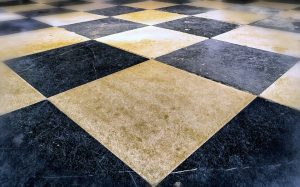Common Places and Items Which Could Contain Asbestos
1st August 2019Although asbestos was banned from sale in 1999, there still remains asbestos in homes and commercial buildings throughout the UK. Breathing in even a small amount of asbestos can cause irreversible lung damage, so it’s crucial to know you live in a home or work in a building that is asbestos-free. Asbestos was predominantly used as insulation in buildings, so extensively in fact, that it was reported as of 2011, 50% of UK homes still contained the material in some form. Asbestos was used in a variety of different household items, but how do you know which of these need replacing in your home?

Insulations
The most obvious concern for people living in homes built before 1990, is whether the insulation was replaced after the discovery of toxicity was made public. Loose asbestos is one of the most dangerous forms of asbestos as it can easily dislodge and release microscopic, highly damaging fibers into the air. It is vital you hire a qualified professional to remove this material, as the dangerous fibers are easily released into the air when touched. This insulation is mainly found in the attic, but can also be found in walls too.
Asbestos Cement
Asbestos was commonly used in cement for much of the 20th Century. They provided a great and simple solution for roofing and siding projects, whilst also offering fire-resistant qualities. Even though there has been extensive work to remove asbestos products from living areas, there is still asbestos cement on and in buildings throughout the UK. Be especially wary around asbestos cement that is exposed to the outdoors, as weathering will break down the layers and release the asbestos. Asbestos cement was widely used in commercial settings and to insulate pipework, so can only be replaced by highly qualified specialists.
Ceiling Tiles
Unfortunately many public and commercial buildings were fitted with asbestos tiling in order to prevent fires and insulate the rooms. Both asbestos and non-asbestos ceiling tiles look similar, so it may be hard to identify the asbestos ceiling tile from appearance alone. Predominantly found in commercial buildings, ceiling tiles must be removed by professionals in order to minimise damage to people working in the building.
Textured Coatings
During the height of asbestos use, textured ceilings and walls were very fashionable for home decoration. Many people don’t know that asbestos might be the cause of the textured walls in their home and it’s worth checking with a professional whether your walls may be filled with asbestos fibers. Asbestos was used in the mixture to strengthen the ‘peaks’ allowing the substance to adhere better to the wall. Although this form of asbestos does not pose a risk when left undisturbed, if you want to remove the texture, it’s best to get a professional to remove the substance.
Asbestos Waste Solutions are proud to provide a reliable, efficient and fully comprehensive asbestos disposal service for domestic and commercial properties throughout the UK. We have a specialist transfer station which provides an alternative disposal option, as we maintain the highest safety procedures to protect your and our health. For more information on our services, please get in touch with us today.
This entry was posted in Asbestos in the Home, Commercial Asbestos. Bookmark the permalink.

 Follow
Follow